IMAGE MAKING IN THE AGE OF PHOTOSHOP
Interview with Jane Long
Image maker Jane Long uses digital manipulations to create composite images. She dives into history – tweaking old photographs to tell new stories. Her work reveals an emotional journey. Increasing access to good camera equipment, according to her makes storytelling even more important. “It’s about what’s on your mind more than your camera” she tells us.
We speak to her about her art, use of technology and what makes an image stand out.
Tell us about your background and initiation into photography?
I grew up in Melbourne and moved to Brisbane about 14 years ago with my husband and two children. I put together my first Photoshop composite of my daughter when she was about two and a half (she’s now 23!). I think it was Photoshop 2 or 3. Over the years I dabbled as a hobby but didn’t take to it seriously. I’ve run my own graphic design business since 1996. I started out working with other people’s images and a few snapshots of my own but eventually I wanted more control over the images, including control over the copyright. I had a few friends who were generous enough to loan me cameras but it wasn’t until I bought my first DSLR in 2012 that I really got interested in photography.
What was your engagement with photography when you started out?
When I first started photography I did a bit of everything! From photographing pregnant friends, babies, families, pets, landscapes to still life images. It was a great way to learn.Soon I realized I wanted to do more of conceptual portraiture and composting work. I wanted to work on a single image or a small series where I’m directly expressing myself than be working on 20 images for clients.
How did Dancing with Costica happen? What about the original images fascinated you?
It was a total accident, really! I was looking for public domain images to practice restoring and recolouring when I came across this archive on Flickr. Two images in particular caught my eye – the young couple from “Fresh” and the little girl from “Innocence”. The young couple appeared to be a multi-racial couple. People appeared somber in photographs back then but I thought this couple looked kind of sad. I started thinking about how hard it still is to cross racial divides today and wondered just how much harder it must have been in Romania in the 1930’s. They’re a young couple in love, they should be happy! The little girl from “Innocence” appealed to me immediately as I wasn’t sure if she was happy or sad, good or bad. It just took a little longer to develop the concept for her.
How did you manage to get permissions to use the archival images.
I checked carefully on the Flickr Commons page for permissions but given that I was doing more than just reproducing the images, I took the first image to the curator of the archive, Cezar Popescu to ask if he was okay with what I was doing. He was immensely supportive and a little further down the track when I decided to start producing prints he very generously gave me access to higher resolution versions of the images. I try to always send a print of anything I do to him as a ‘thank you’. He has the most comprehensive collection of this series to date!
carefully on the Flickr Commons page for permissions but given that I was doing more than just reproducing the images, I took the first image to the curator of the archive, Cezar Popescu to ask if he was okay with what I was doing. He was immensely supportive and a little further down the track when I decided to start producing prints he very generously gave me access to higher resolution versions of the images. I try to always send a print of anything I do to him as a ‘thank you’. He has the most comprehensive collection of this series to date!
In this project, you re-visit and re-imagine history. What does bringing past into the present mean to you?
It was more about re-imagining the past, rather than deliberately bringing them into the present. What might their lives have been? Because we will likely never know, that opened up the options to fantastical ideas and new realities. These people were born into a poor country at a time of war. I wanted something better for them, something special.
This work has been published widely on the internet. What do you think ‘clicked’ with the audience?
I think the idea that people from the past really weren’t that different to us. If it weren’t for the limited technology available at the time, perhaps we’d see them differently.
How do you think technology enables us to make sense of the world we live in?
I think it breaks down barriers in many ways. We can see and talk to people from other countries and cultures. This project was a classic example of that situation – I came across something by chance on the internet and ended up developing a relationship with people on the other side of the world (thank you Google Translate)!
Your project Self Preservation looks disturbing, we wonder if working on it gave you sleepless nights.
The Self Preservation series was a deeply emotional series for me. I was struggling with depression at the time and trying to find ways to express how I felt. This series approaches things from the perspective of aging. I would internalize my thoughts pose to make myself as small as possible.
Your project Nasty Little Critters looks quite edgy – can you tell us a bit about it? How did you conceive the project?
Nasty Little Critters is a somewhat tongue-in-cheek reflection of childhood and parenthood. With the passing of several family members and my children reaching adulthood I found myself reflecting both on the sweet highlights and the painful losses of family relationships.
Most of the main characters in this series are toys from both my and my children’s childhood, albeit a little altered! They all have personal meaning to me and in some cases represent particular family members. The views are distorted and extreme but represent the darker side of how we feel about those we love unconditionally and those who we know intimately through shared history.

What about parenthood and family intrigued you to work on this idea?
I see a lot of expressions of how wonderful parenthood is – and it is! But there are also moments of incredible fear and pain. This series is a bit of a visual scream for me! I wasn’t so much choosing what to construct as I was purging my feelings.
Your work deals a lot with family and children. how does being a mother inform your work?
I don’t necessarily think of it in that context but I guess my work has allowed me to express my feelings in a way that is socially acceptable! I am aware of using my work as an example to my kids that it’s normal to have ups and downs and it’s okay to express your feelings about them.
What comes across in all your projects is surrealism – as an artist, what are the concerns or ideas you are grappling with?
I really like the idea of images being somewhat ambiguous – is it real or not, is it nice or not? I have my personal interpretation of an image but it’s just that, personal. I want people to have their own interpretation of the work. I also like the idea that if something cannot be clearly categorized or labelled, it’s much harder to make a judgement about it. So many people try to believe that the world is black and white when it will always be many shades of grey.
Many times it’s my story but sometimes I’m a bit shy about it and cloak it in another story instead! There are often small elements in my images that really only have significant meaning to me. I like to emphasise that things are not always what they seem.
The world of photography is expanding with new technology and platforms for dissemination. What do you think is going to make an important image?
I think as cameras become more automated and easy to use, it will become more about composition and constructing the light. The story has to be much stronger to stand out in a crowd.
I’d like to think that as the technological playing field evens out and many people have access to good quality equipment, people start to appreciate that it’s about more than your camera. It’s about what’s in your mind, whether you are shooting products for a client or a fantasy composite.
What are you currently working on?
Ha ha I’m having a bit of a creative block at the moment! I had a really busy period at the end of last year and start of this year with the artwork for the Aurora album cover and the Nasty Little Creatures series. Maybe by the time I finally get around to packing up everything from those two projects I’ll have a clearer idea of what comes next. I am looking at the possibility of a book of the Dancing with Costică series but I need to sort out my budget on that!
Jane Long’s website: janelong.photomerchant.net
Costica Ascinte Archive: colectiacosticaacsinte.eu
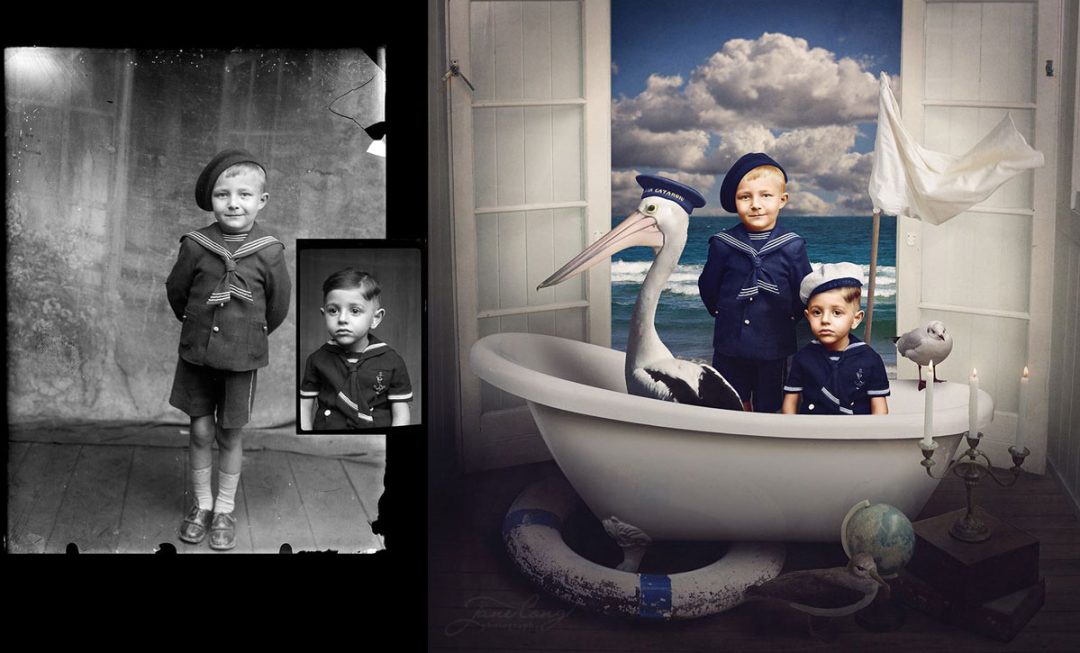
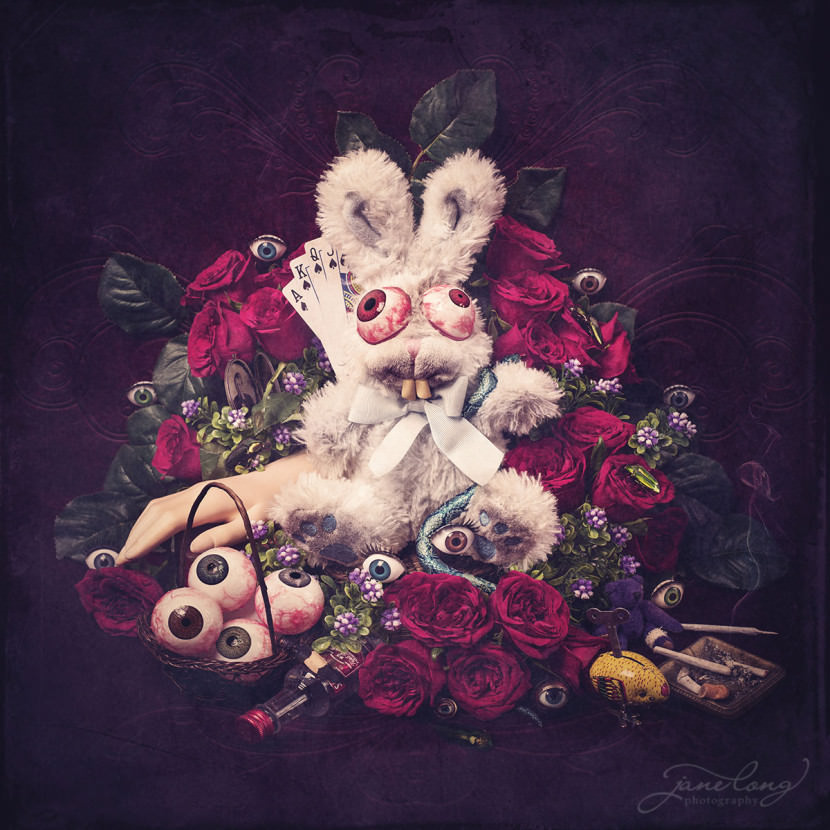
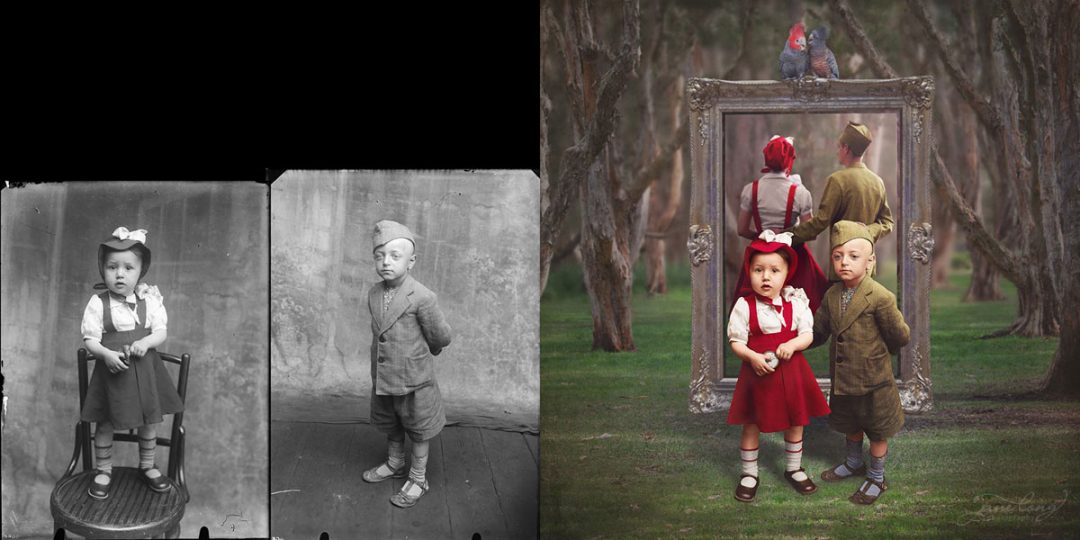
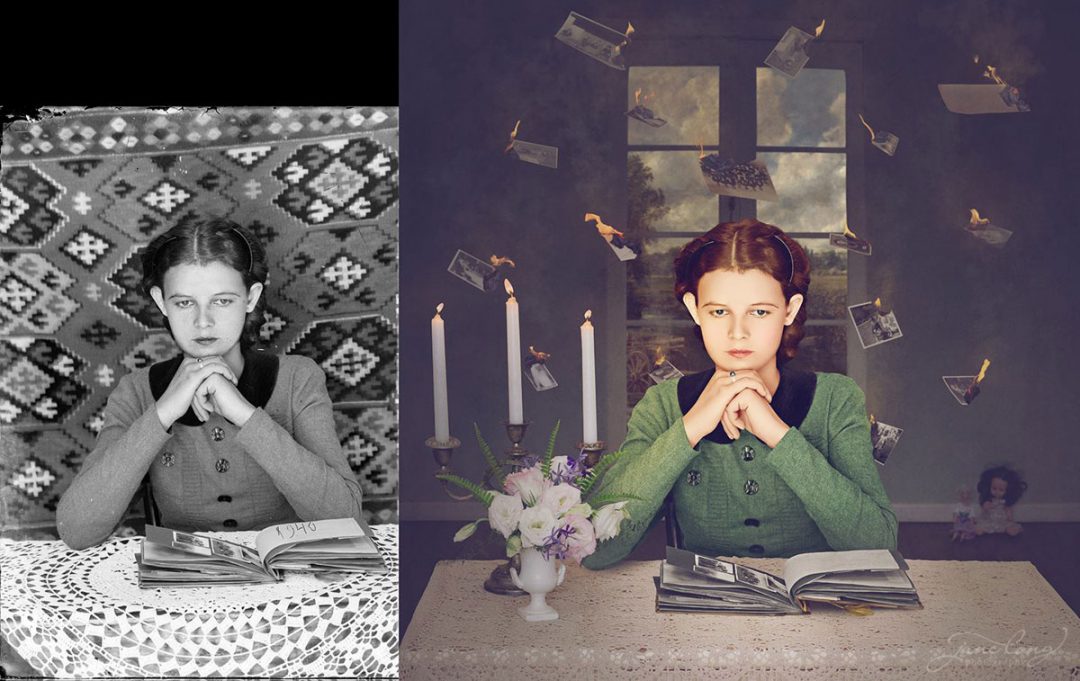
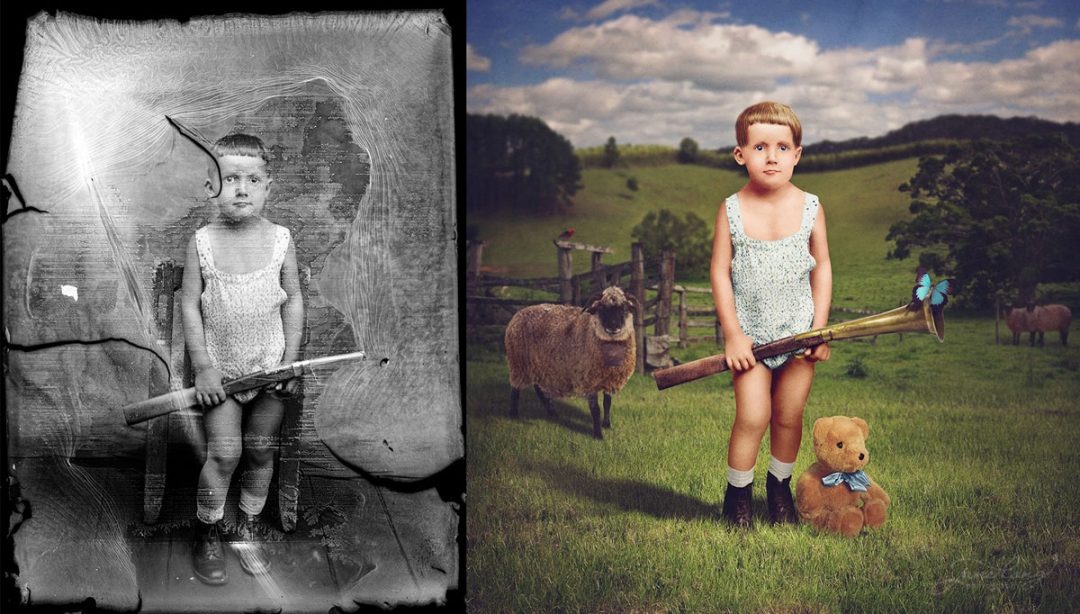
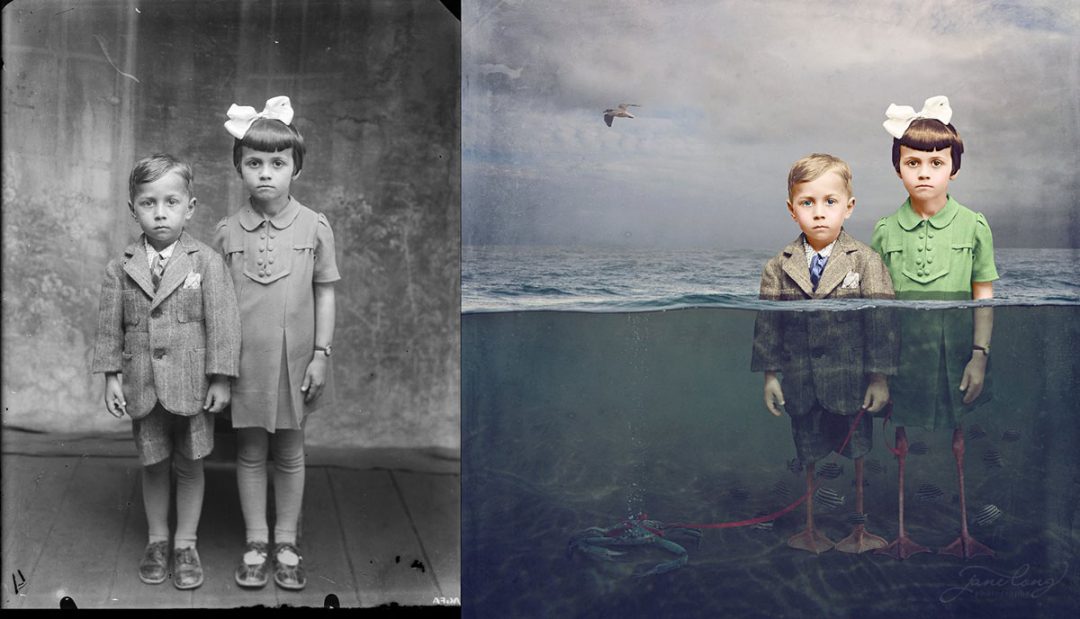






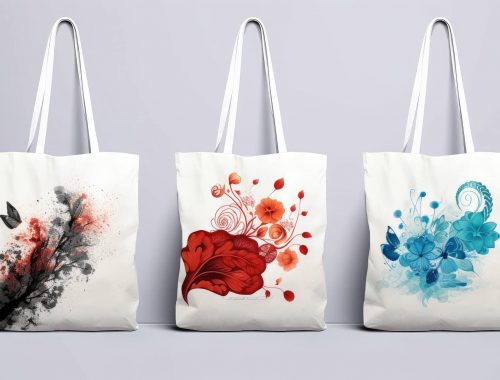

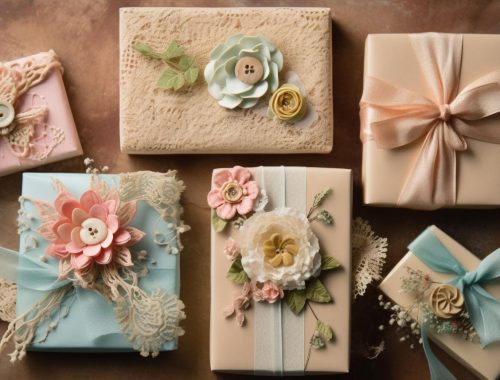


2 Comments
love your ‘seeing eye’ — the fact that you can see more than the average and are then able to show us 🙂
beautiful, I especially like the one with the day of the dead doll.